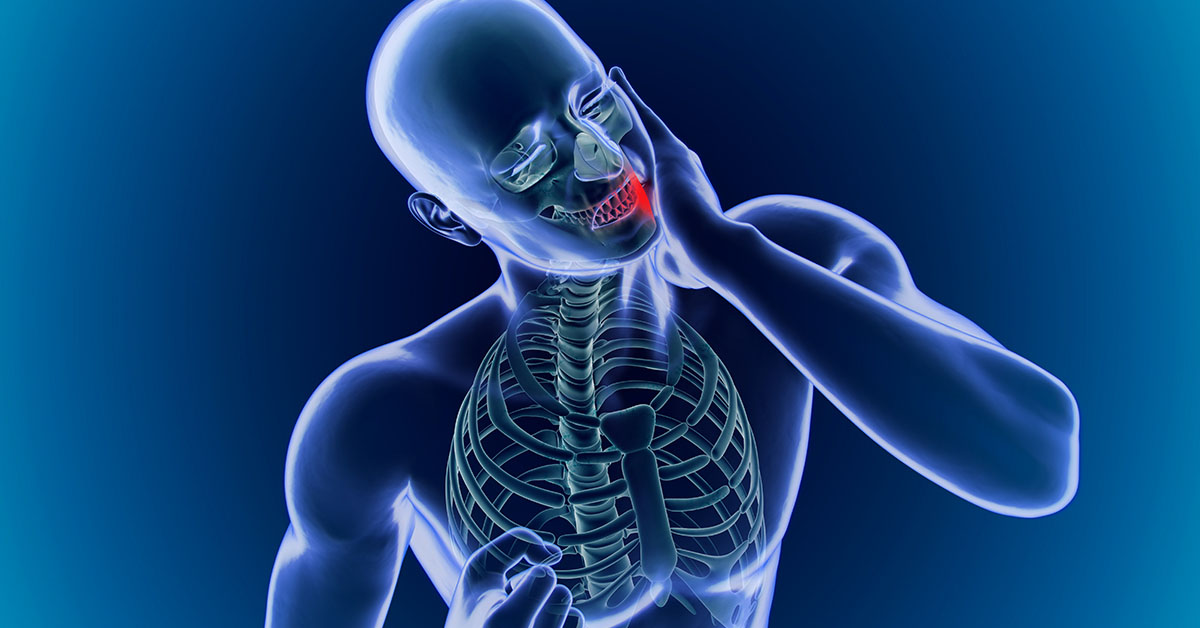
What is TMJ Pain?
The joint that connects your lower jaw (mandible) to your skull is referred to as the temporo-mandibular joint (TMJ). The TMJ allows you to open and close your jaw so you can eat, speak, and breathe through your mouth.
TMJ pain commonly refers to TMJ disorders that cause pain, tenderness, and difficulty in moving the joint. Approximately 10 million people in the United States suffer from some type of TMJ pain.
Causes of TMJ Pain
The TMJ functions through a hinge-type action and sliding motions. The action and motion are normally kept smooth and trouble-free by the presence of cartilage and a shock-absorbing disk between the moving parts of the joint. TMJ pain or disorders can result from the following issues or conditions:
- The cartilage is eroded away or damaged, sometimes from arthritis.
- The shock-absorbing disk has deteriorated or is no longer in the correct alignment or position.
- The TMJ has been damaged from an injury, impact, or trauma.
You are at a greater risk of developing TMJ pain if you are affected by the following:
- If you have one or more of the multiple forms of arthritis.
- If you have a connective tissue disease.
- If you grind your teeth (usually happens in people's sleep).
- If you have had an injury to your jaw.
- If you have jaw problems at birth.
Symptoms and Diagnosis of TMJ Pain
The symptoms of TMJ disorders will vary depending on the specific cause of your disorder and the severity. The common symptoms of TMJ pain can include the following:
- Pain in or around the jaw, face, or neck areas.
- An aching pain around the ear area.
- Pain when chewing or swallowing.
- A popping, cracking, or clicking noise when you move your jaw.
- A feeling that your jaw is locked, causing difficulties in opening or closing your mouth.
- Muscle stiffness around the jaw.
- Restricted movement of the jaw.
- A feeling that your jaw has shifted, or repositioned, altering the way that your lower jaw aligns with your upper jaw.
Your ENT specialist will diagnose your TMJ pain by examining your jaw area, specifically by performing some or all of the following:
- Examining your jaw's range of motion as you attempt to fully open and close your mouth.
- Pressing on your jaw to determine where pain and stiffness is originating.
- Feeling your jaw as you open and close your mouth.
- Ordering either an X-ray, MRI, or a CT scan to provide a detailed image of your jaw and TMJ area.
Treatments for TMJ Pain
TMJ pain can sometimes cease without treatment. If your pain and other symptoms continue, treatment options for TMJ often include:
- Medications such as pain relievers and muscle relaxants.
- Therapies including physical therapy to strengthen the jaw muscles or the use of an oral splint.
- Medical procedures such as surgery that drains debris and fluid from the TMJ area, injections, arthroscopic surgery, or open-joint surgery.



